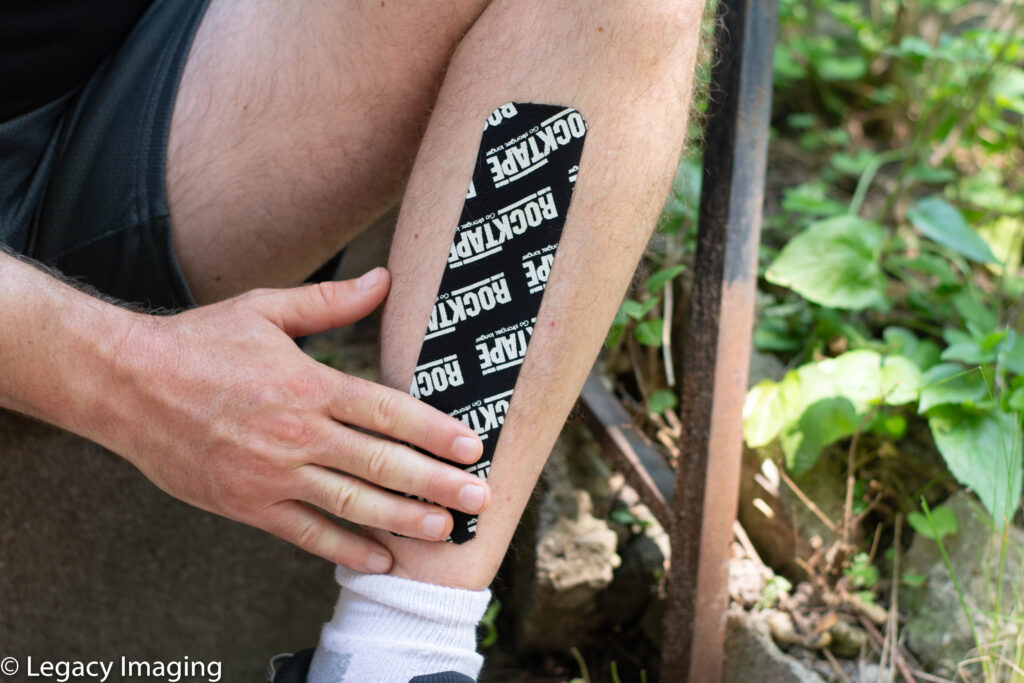By Jeff Kittmer RMT
Shin splints are one of the most common issues that athletes and weekend warriors encounter. Typically experienced by runners, it also occurs in those who play vigorous sports and start new fitness programs. Shin splints generally range from a mildly burning sensation to crippling pain. So, how do we recover and prevent it from happening again in the future? Or better yet, how can we prevent it from happening in the first place?
There is new research showing that the cause of shin splints may not be what was previously assumed. Traditionally, it was thought that tight muscles in the shin area pulled at their insertion points along the tibia, creating tension on the periosteum (a thin membrane that envelops the tibia) irritating the periosteum and causing burning pain.
New studies have shown that when we run, the tibia bows backwards slightly when the foot hits the ground. The tibia absorbs the force like a beam on a bridge when weight is applied. The stress is generally experienced on the medial side of the tibia. The body responds to the stress by remodeling the bone to become stronger and thicker. Shin pain is commonly seen in inexperienced runners; their bones have not yet adapted to the high impact stress of running.
Shin splints often occur when you increase the number of training days within a week, or the duration and intensity, such as running longer distances or on hills. If done too aggressively, or without adequate recovery time, shin splints can result.
Recovery from shin splints does not necessarily mean that you have to stop training. You may want to look at changing the surface that you are running on. Running on a track or trail running is a great way to mix things up while reducing the impact on your body. You may need to reduce your mileage if you have increased it too quickly. Or you may wish to take some time off and stop, rest and relax. This is also a perfect opportunity to explore some cross-training options. Cycling is a fantastic low impact way to work on the legs and cardio. Swimming is a great full body activity when recovering from impact induced injuries.
Here are a couple of tools to help you speed up recovery when you start to feel the burn, and not in a good way!
Strengthening to Prevent Shin Splints
In addition to changing up your training routine to include cycling, swimming, and running on softer surfaces, strengthening the flexor digitorum longus will help reduce the pain and prevent future calf injuries. Here are some simple exercises that I like to do when I start to feel the not so good “burn” in the shins.
Foot Inversions
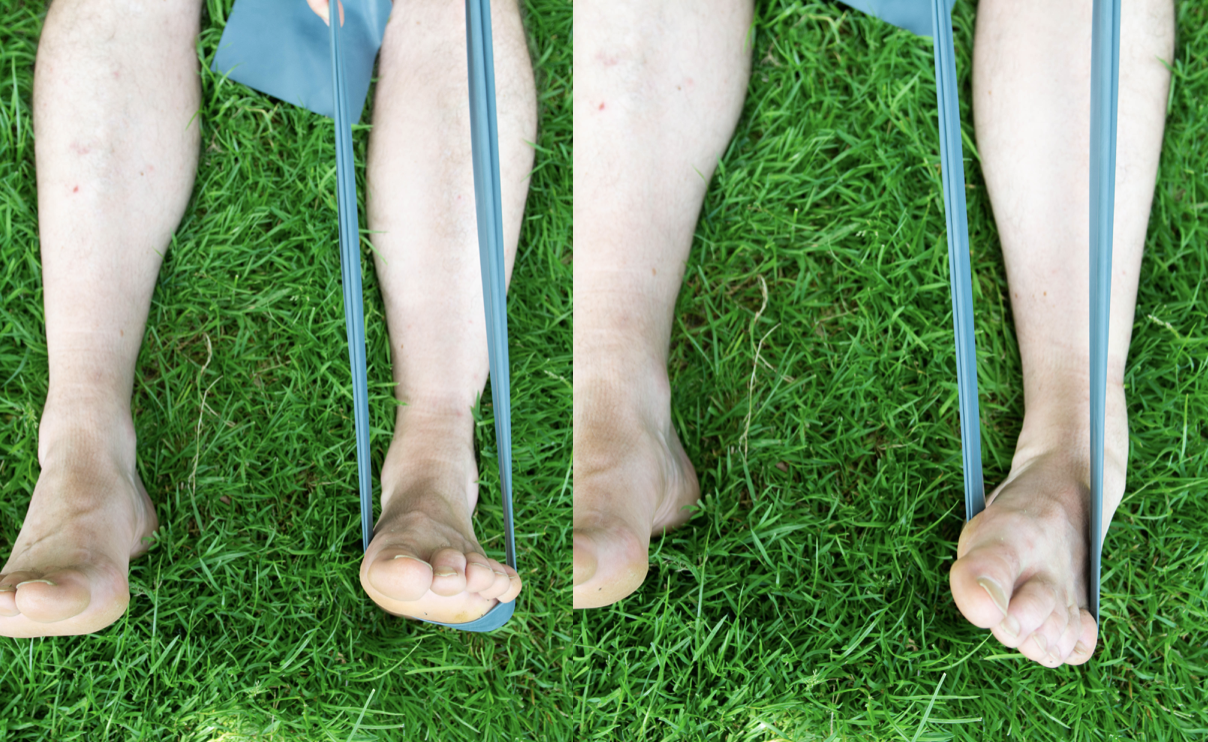
1. Inversion of the foot occurs when the sole of the foot is turned medially
2. Sit on the floor with your legs extended to the front
3. Loop a stretch band around your right foot and pull on it to create resistance
4. Slowly rotate your right foot so that the sole faces towards your left foot
5. Hold this position for five seconds; repeat for ten reps
6. Repeat with the left foot
Calf Raises and Lowers

1. Stand with the balls of your feet on a step with your heels overhanging
2. Raise heels up as high as you can
3. Slowly lower your heels below the level of the step
4. To increase intensity, add some hand weights
Towel Bunching
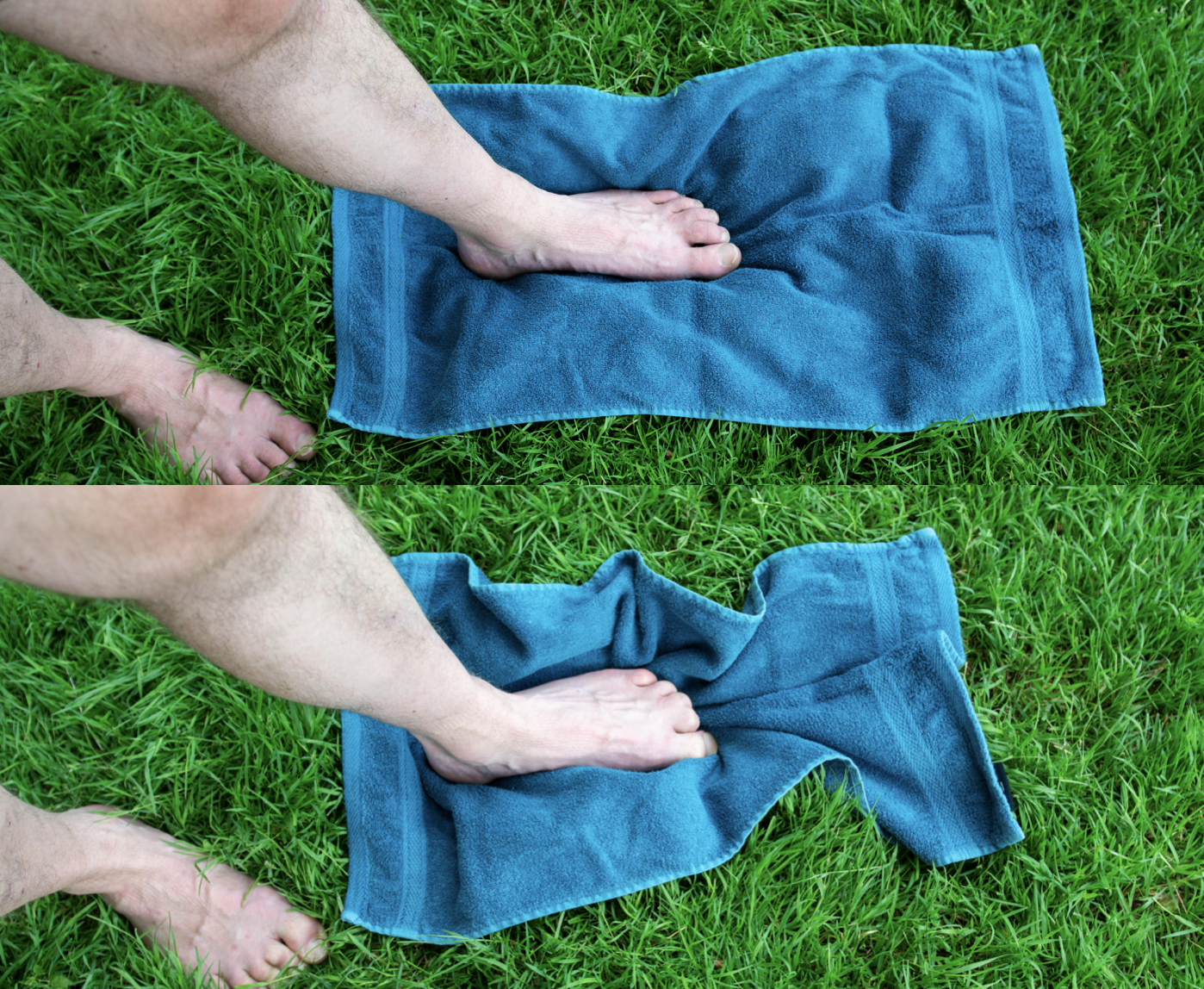
You use your flexor digitorum longus on a daily basis to help your toes grip the floor or the inside of your shoes. The towel-bunching exercise utilizes the action to work the muscle.
1. Place a medium size towel in front of a chair
2. Sit in the chair and place your foot flat on the towel
3. Use the toes to grip the towel and scrunch it towards your heel
4. Continue through the length of the towel, then spread it out and repeat for the other foot
Infinity Ball Massage
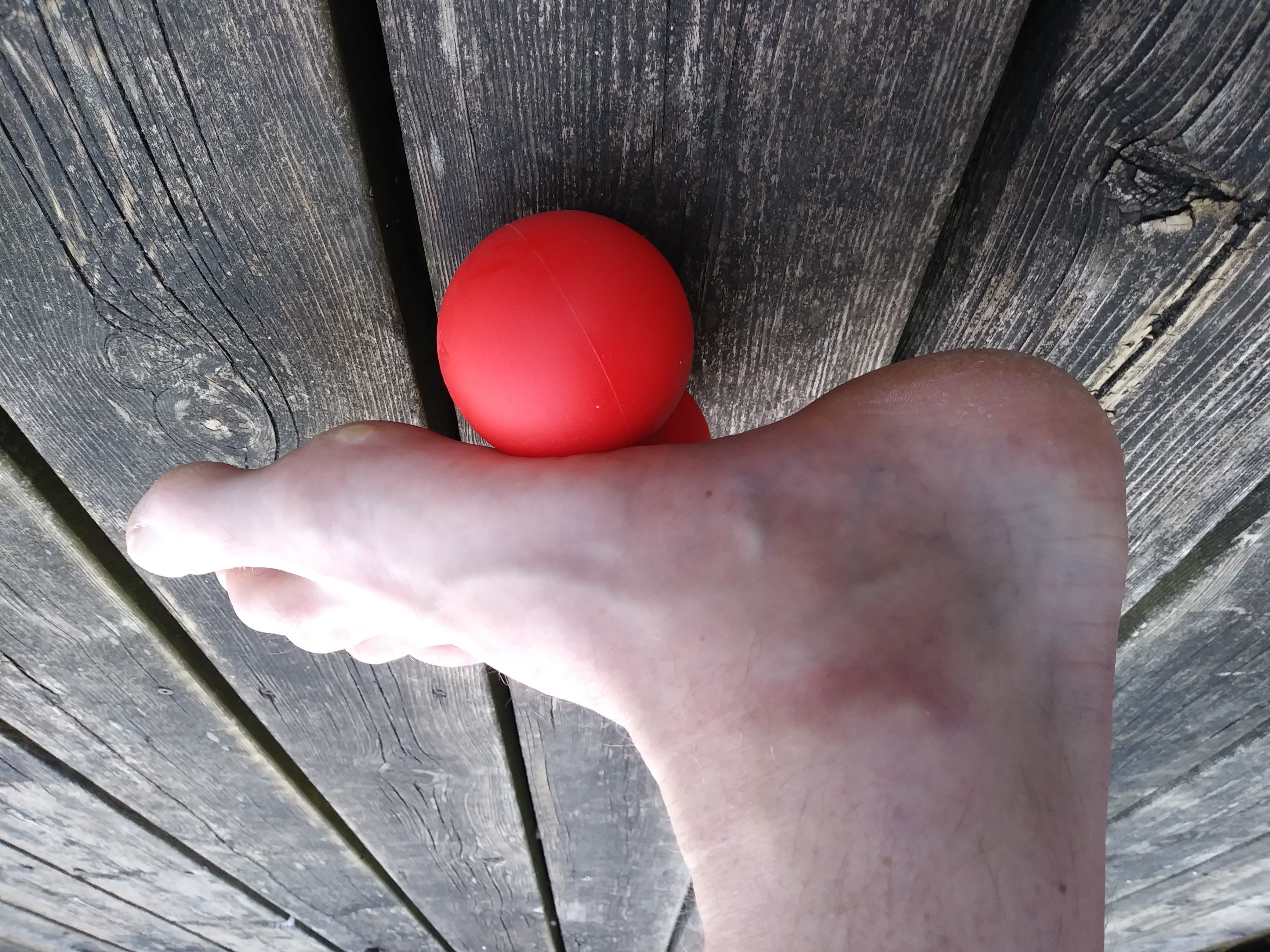
Self massage with Infinity balls works wonders for shin splint pain. It releases the tension of those hard to get to muscles that the foam roller can’t quite reach. Using gentle circular motions along your shin after applying some Rock Rub will do the trick. Rock Rub is a fantastic lubricant, improving the gliding motion of the balls and it moisturizes the skin.
Taping
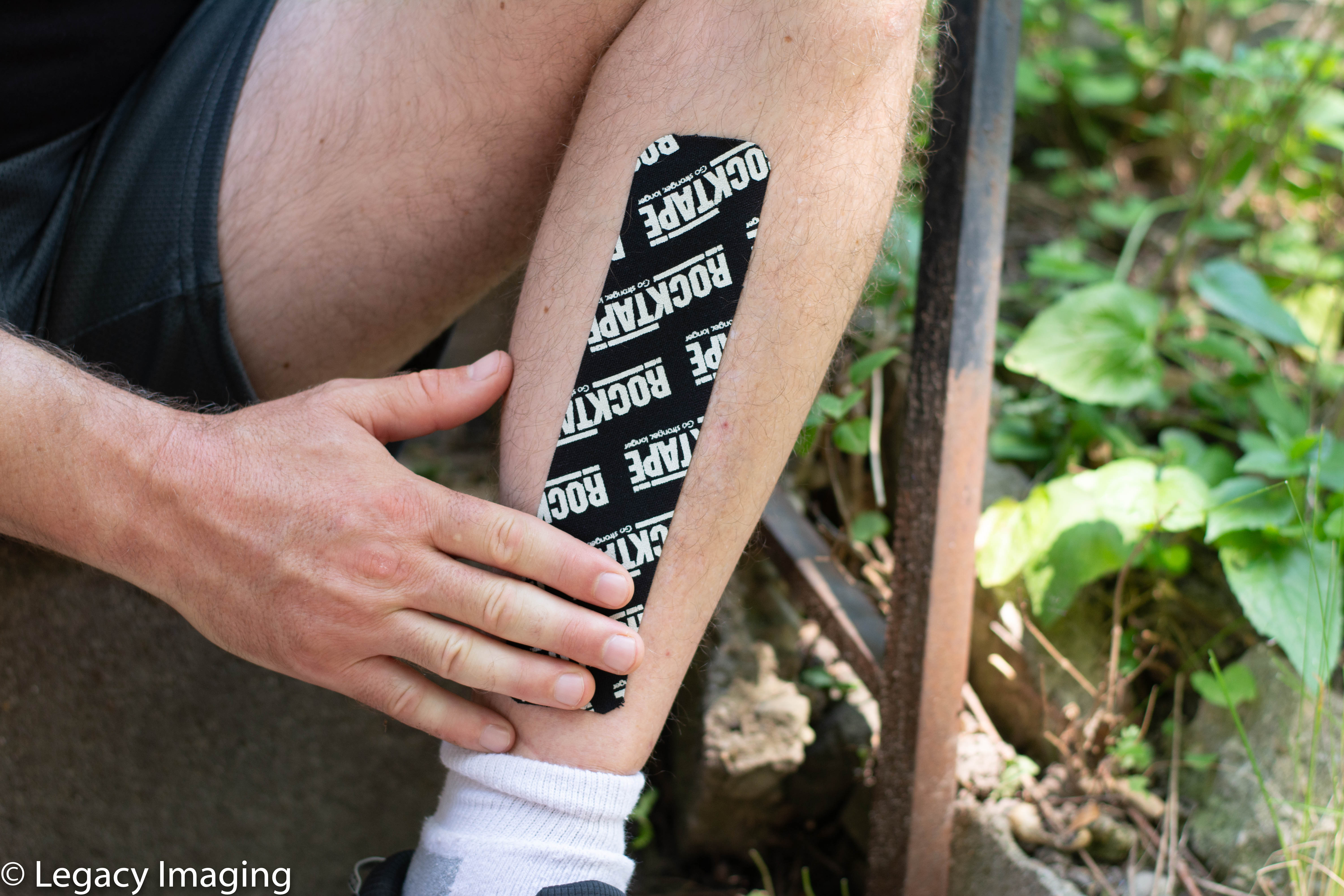
Rock tape microscopically lifts the skin away from the fascia and muscle below it creating de-compressive relief from the pain. Taping is an easy way to treat and prevent shin splints from occurring.
Even though shin splints are a common injury, it doesn’t have to slow you down. There are many options to keep you moving and on track with your training regime. Between cross training, strengthening, and mobilizing with massage and RockTape. You will be up and running in no time.
Click here to read another awesome blog from Jeff!
Click here to shop RockBalls, RockFloss and more!
